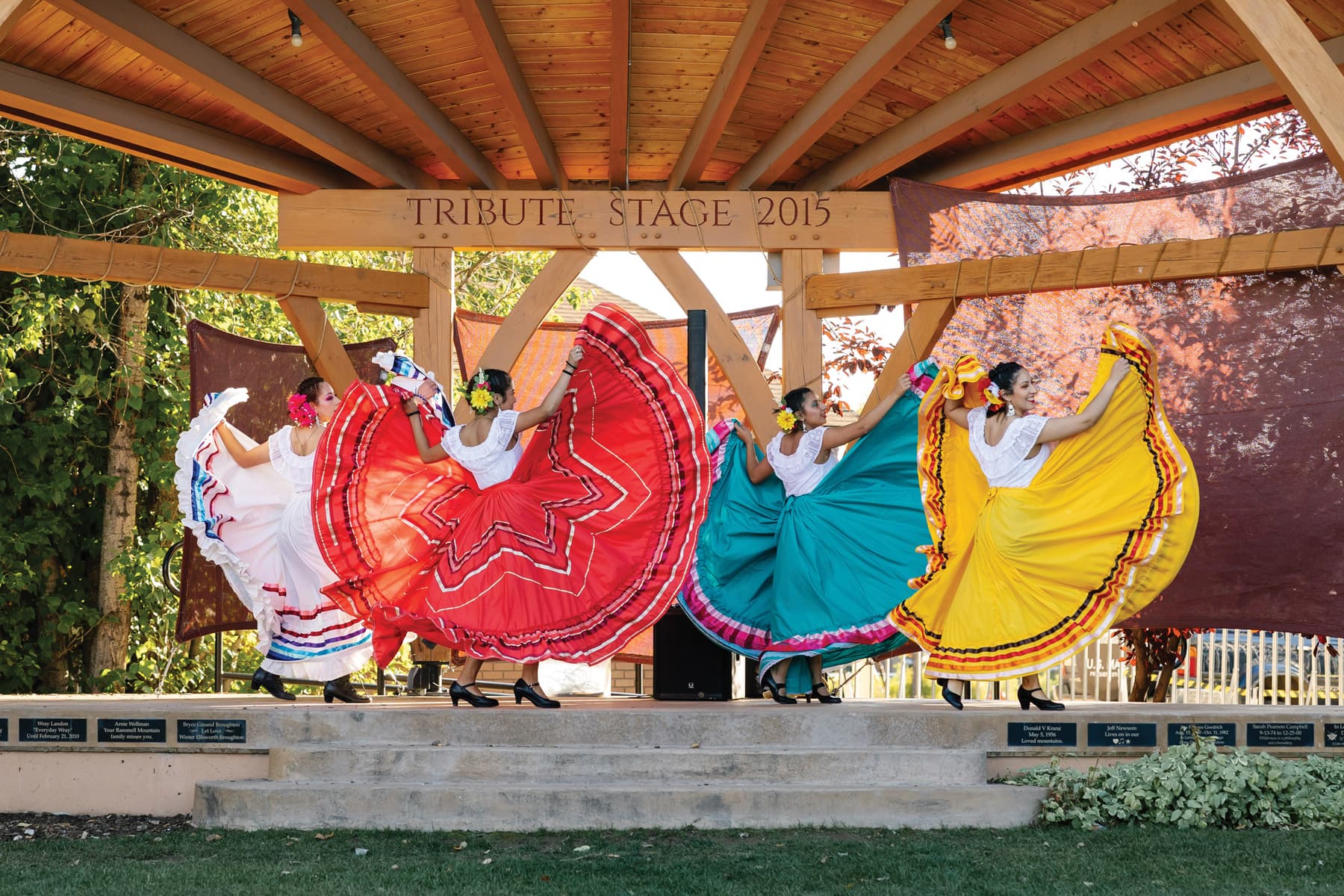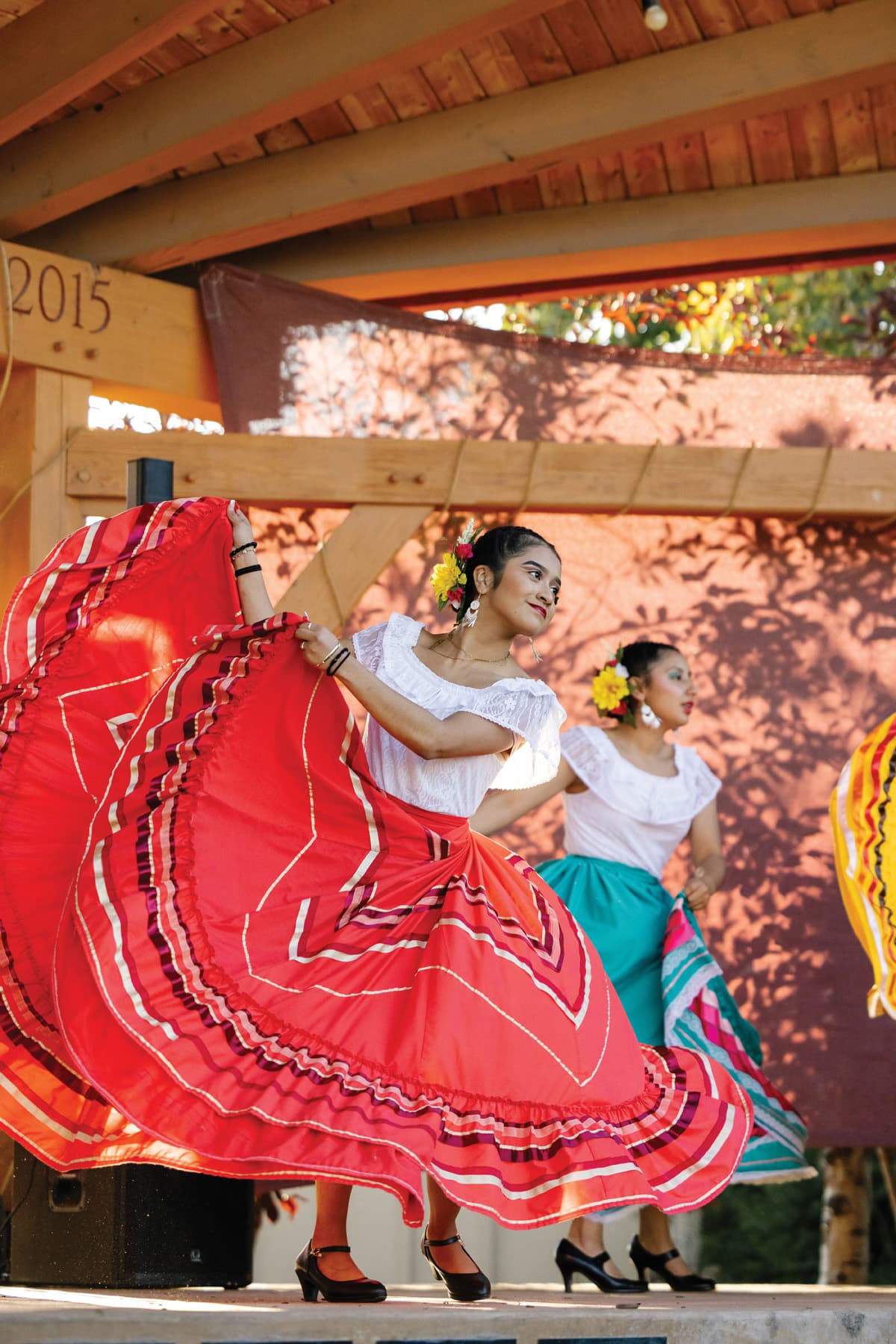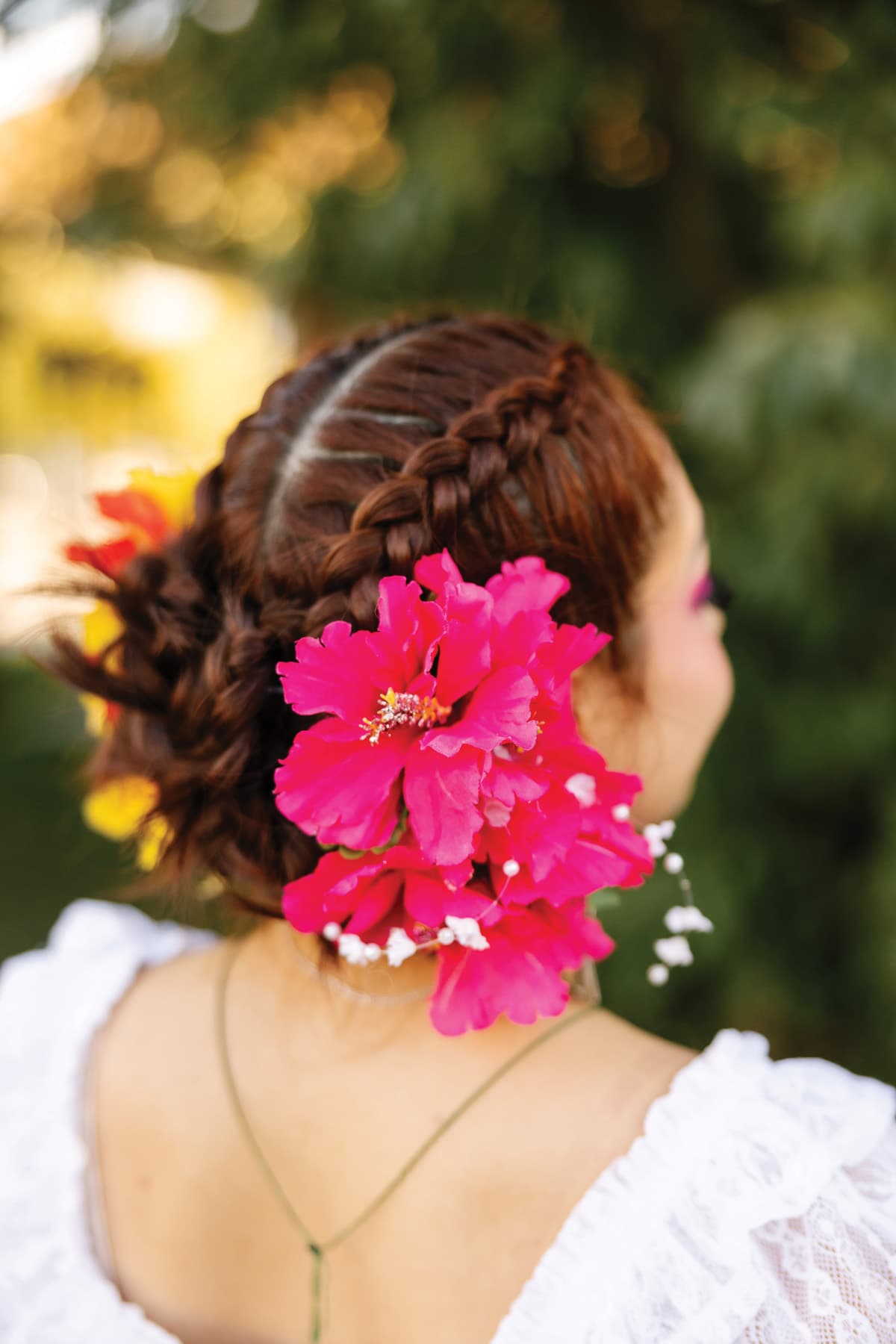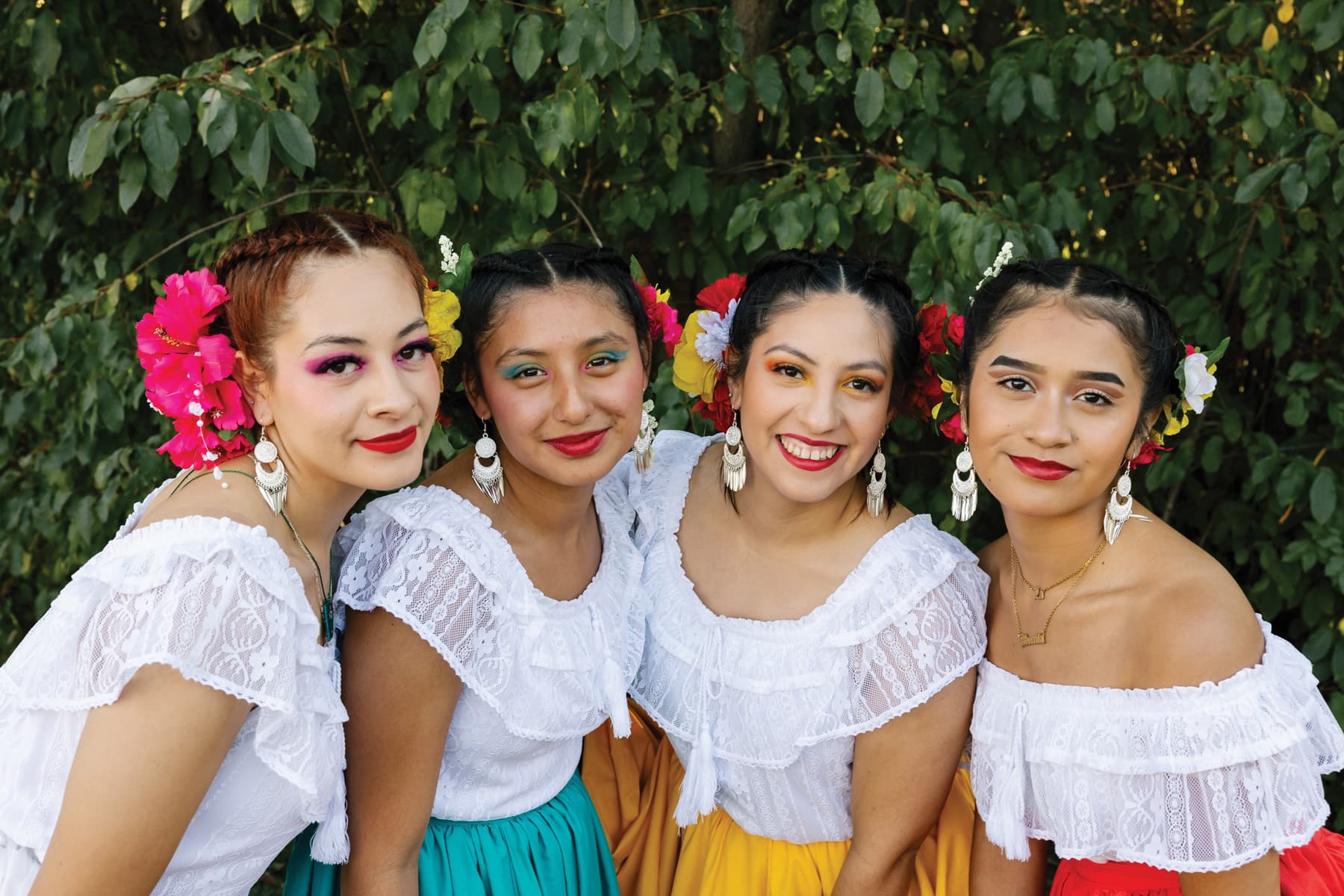A Family in Motion

For 57-year-old Gabriela Hermosillo, folklórico is family. Folklórico, a Hispanic heritage dance troupe that comprises around sixteen students, lights up Teton Valley celebrations with fleet-footed performances at such events as the Fourth of July parade in Victor.
The girls twirl in voluminous, ribboned skirts called faldeos in electric shades of pink, blue, orange, and yellow.
Gabriela is the one behind the scenes, juggling her full-time job at the Teton County Courthouse with evening dance practices in the school cafeteria, not to mention sewing costumes into the early hours of the morning. Sometimes the thirteen-hour days work her to the bone, but she does it to offer local youth a safe haven.
“Yes, this is a dance group, but this is a family,” Gabriela says. “If you have something I can help with that has nothing to do with dance, I’ll find a way to help you. I want the group to have unity.”
Gabriela didn’t intend to become such an integral thread in the tapestry of the valley’s Latinx community. As a deputy clerk and interpreter for the Teton County Courthouse for nearly twenty-three years, Gabriela found herself fielding questions about translation services for acquiring passports, birth certificates, and power of attorney in the valley. Around 2010, Gabriela and her sister, Juanita Flores, decided to start a nonprofit, the Hispanic Resource Center, to better connect the Latinx community with resources.
The sisters hosted an informational night about DACA, or Deferred Action for Childhood Arrivals, a program that allows some undocumented immigrants who came to the U.S. as children to work legally and avoid deportation. Gabriela and Juanita wanted to help kids apply for that program. One volunteer that night from Jalisco, a state in west-central Mexico, did a dance performance.

Folklórico, a Mexican dance troupe, helps connect Teton Valley youth with their heritage.


“All of a sudden, we thought, ‘Why don’t we start doing a Folklórico for all the kids?’ Just to bring our heritage back out here and share it,” Gabriela says.
Gabriela was about seven years old when her family emigrated from Tijuana to San Diego. “I didn’t really have a lot of my culture,” she says.
Folklórico is nestled under the umbrella of the nonprofit resource center. Now, in addition to connecting the Latinx community with resources, the organization also promotes cultural heritage. That’s where Folklórico comes in, enlivening quinceañeras (traditional ceremonies marking a girl’s fifteenth birthday), weddings, and community-wide celebrations like the Tin Cup Challenge and the sandhill crane festival. The bright shades and exuberant movements carry a message in every step: “I am here.”
The group strives to learn several different dances, each style hailing from different regions of Mexico. Folklórico encompasses a diverse spectrum, from traditional ceremonial to social dances, rather than one homogenous style. One dance may depict a historical, regional event, while another may impersonate a local animal. Originating in Sinaloa, a state in northwestern Mexico, a cumbia-style dance has become especially popular for the group.
“Right now, what we’re doing more is Sinaloa, because we have a lot of teenagers and they like to move a little bit more,” Gabriela says with a laugh. “We try to do that and Jalisco. That’s what we stick to and, of course, Veracruz [a southeastern state bordering the Gulf of Mexico].”
Many non-Mexicans are already familiar with the dances of the Jalisco region, with its mariachi music and women in braids and colorful skirts. Jalisco is also the birthplace of Mexico’s national dance, the Jarabe Tapatío or “hat dance.”
The fandango, from Veracruz, known for its lightning-fast footwork, is another popular dance for Teton Valley kids. “When “La Bamba” [a Mexican folk song] blew up in the U.S., that’s from Veracruz,” Gabriela explains.
Folklórico has become a form of outreach for troubled youth. If Gabriela sees a juvenile who is having problems in the court system—a potential probation sentence, for example—she’ll reach out to offer community service by involving them in Folklórico.



A sister duo, Gabriela Hermosillo and Juanita Flores, founded Folklórico thirteen years ago.
Gabriela recalls one middle-schooler who was having problems with fighting. Gabriela convinced the student’s parents and grandmother to let the girl join Folklórico as community service. Now she’s a high-schooler actively involved in the cheer team.
“Her grades are really high,” Gabriela says proudly. “We got several scholarships to help her out with her uniforms and she is a totally different girl.
“That’s what I always envisioned our group to be, a family,” Gabriela says. “A group for kids to feel safe and for kids to have something to do. It’s mostly girls and I think they enjoy the togetherness most of all.”
After more than ten years at the helm of the dance troupe and nearing her sixtieth birthday, Gabriela says she is ready to pass the torch to two new instructors, Carla and Victoria Hernandez.
“It’s funny, because we’re doing it by sisters,” Gabriela says. “My sister and I started all this and then they will be continuing it and they have little, little kids. They’re going to be the next generation coming to dance.”
